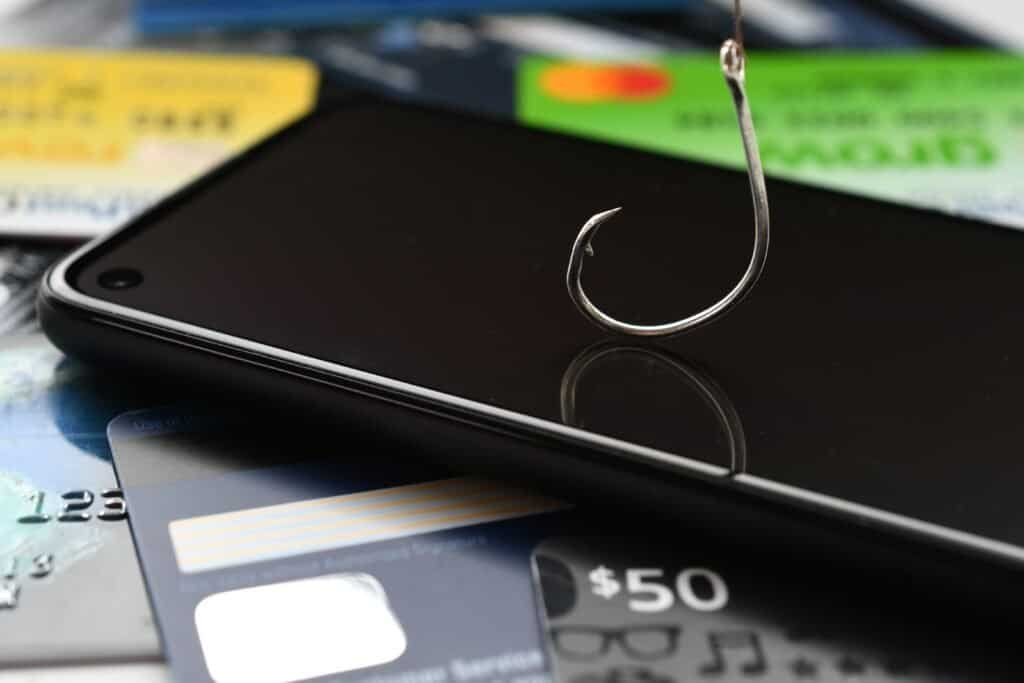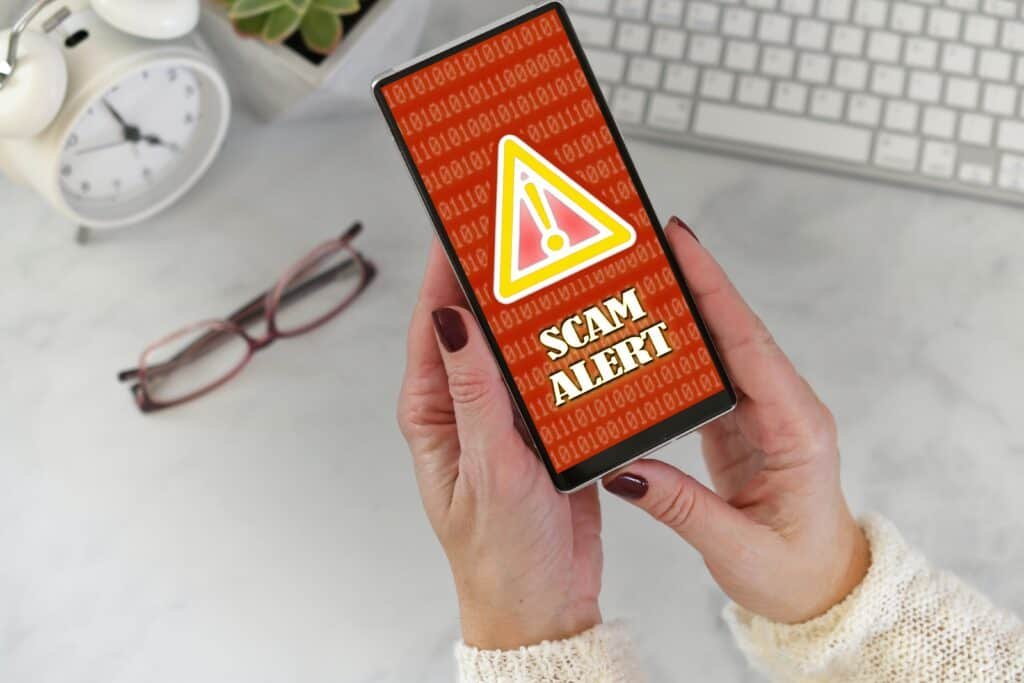Stop Caller ID Spoofing: Protect Your Phone Number from Scammers

We may earn a small fee from the companies mentioned in this post.
In an era where technology is evolving at an unprecedented pace, the rise of caller ID spoofing has compromised the trust in our phone’s caller ID. does caller id spoofing work,
This deceptive tactic, employed by scammers to spoofed phone number display false information on your caller ID, makes it challenging to recognise the true source of an incoming call and leaves you vulnerable to potential scams.
Key Takeaways
Understand Caller ID Spoofing to protect against malicious intent.
Take precautionary measures such as reporting suspicious calls and using security applications.
Phone companies are implementing authentication systems, legal frameworks, and the DNO List to prevent spoofed calls.
Understanding Caller ID Spoofing

Caller ID spoofing is a technique wherein scammers manipulate the caller ID information displayed during an incoming call to conceal their identity, often with the objective of gaining access to confidential personal data or defrauding the target of funds.
As a result, this widespread phenomenon has led to the unfortunate realisation that “you can no longer trust your phone app for caller ids,” even if it shows your own phone number.
The protection against these spoofed calls starts with understanding different spoofing methods, recognizing warning signs, and implementing preventative steps.
Types of Spoofing Methods
Various methods of caller ID spoofing exist, including:
VoIP spoofing: a technique used by scammers to manipulate their caller ID display name when establishing accounts, allowing them to impersonate someone else, sometimes even making threatening calls
Spoofing services: services that provide the ability to change the caller ID information displayed on the recipient’s phone
Orange boxing: a method that involves using a device called an orange box to manipulate the caller ID information
Each method has its unique approach to deceive the recipient.
Contrastingly, spoofing services provide the option for users to tailor their caller ID information, which can be either paid or free. These services, available as prepaid calling cards or web-based platforms and mobile apps, require users to dial a number provided by the company, followed by their PIN, the recipient’s number, and the number they wish to display as the inaccurate caller ID information.
Some providers even offer additional features like call recording, a voice mail alteration, and text message transmission.
Orange boxing, a more sophisticated spoofing technique, generates an audio signal along the telephone line, giving the impression of an incoming call from the spoofed number. This method is considered both a social engineering technique and a technical hack.
Legitimate vs. Illegal Uses
While caller ID spoofing might sound inherently nefarious, there are legitimate purposes for its use, such as protecting privacy or aiding covert law enforcement operations. However, it becomes illegal when phone spoofing dangerous used with malicious intent, such as committing fraud or causing harm.
In such cases, penalties under the Truth in Caller ID Act can include forfeiture penalties or criminal fines.
To protect yourself, if you receive a call from someone claiming to represent a company or government agency, it’s wise to hang up and contact the telephone company or organisation directly using the phone number listed on their official website.
Identifying Spoofed Calls

Recognizing spoofed calls plays a key role in protecting your personal information and steering clear of scams. Being alert to warning signs, including generic greetings, unknown callers, insisting on personal data, and unexpected calls from known and unknown numbers together, allows you to spot potential spoofed calls and guard against their harmful intentions.
One particularly deceptive tactic used in scam calls is neighbor spoofing, where scammers display phone numbers from your local area, increasing the likelihood that you will answer the call.
Red Flags to Watch Out For
When attempting to identify spoofed calls, it’s essential to watch for warning signs during phone calls, such as:
Unexpected calls from familiar numbers
Generic greetings (e.g., “Please hold while we connect your call”)
Callers who seem overly insistent on obtaining your personal information
Neighbor spoofing, a common indication of spoofed calls, involves scammers manipulating the caller ID to make it appear as if the call is coming from a local number or a the caller’s number is similar to yours, increasing the chances that you’ll answer the call.
Neighbour Spoofing
Neighbor spoofing is a deceptive technique employed by scammers to increase the probability of their calls being answered. By displaying phone numbers from your local area or numbers similar to your own, scammers deceive you into sometimes answer calls, thinking the call is from a trustworthy local source.
This practice, known as phone number spoofing, is a common tactic used in neighbor spoofing schemes.
Neighbor spoofing allows scammers to effectively hide their identities, simplifying the execution of their deceptive operations.
Preventing Your Number from Being Spoofed

To avoid your number from being spoofed and becoming a scam victim, it’s imperative to adopt online safety practices, which include:
Not disclosing personal data unnecessarily
Exercising caution with online sweepstakes
Scrutinizing terms and conditions before submitting your information
Additionally, reporting suspicious calls to the FCC or other relevant authorities can help combat caller ID spoofing and protect yourself against potential threats.
Online Safety Measures
Protecting your phone number from being spoofed involves being cautious about the information you share online. Avoid disclosing personal data, such as your phone number, unless absolutely necessary.
Be wary of participating in online sweepstakes, as scammers may use the information you provide during the entry process to contact you with fraudulent calls or text messages.
When providing your information to websites, always read the terms and conditions thoroughly to ensure your data is not being shared or sold without your consent.
Reporting Suspicious Calls
If you suspect that you’ve been targeted by a spoofed call, reporting it to the FCC or other relevant authorities can help prevent future spoofed numbers or calls, and alert them to potential scams. When reporting a suspicious call, provide the following information:
Date and time of the call
Caller’s phone number (if available)
Description of the call
Any additional details relevant to the investigation
Reporting these calls not only safeguards you but also aids in combating false caller ID, spoofing phone spam, and telephone frauds.
Protect yourself from Royal Mail Fee to Pay scams, read our informative blogpost.
Handling Spoofed Calls on Your Device

Managing spoofed calls on your mobile carrier messaging service or device involves the following steps:
Block unwanted calls from specific numbers.
Report dubious calls to your service provider or the appropriate authorities.
Use security applications and tools to identify and block spoofed calls. By taking these actions, you can reduce the risk of becoming a casualty of caller ID spoofing scams.
Blocking Spoofed Calls

Blocking spoofed or spam calls can be done through your phone’s settings or by using third-party apps designed to block unwanted calls.
On Android devices, you can access the Caller ID and spam call blocking feature through the Phone app’s settings, while on iPhones, you can block specific numbers and send unknown or spam callers directly to new voicemail message below. By blocking nuisance callers or caller ID scams, you’re taking a proactive step towards safeguarding your privacy and security.
Reporting and Filtering Unwanted Calls
Reporting and filtering unwanted calls not only helps prevent future spoofed calls but also alerts authorities to potential scams. By using security apps like Avast One and Clario, you can block and report unwanted calls while receiving real-time call protection and warnings about potential spoofed calls.
Staying alert and reporting dubious incoming calls first, including those making threatening phone calls, contributes to the battle against phone spoofing scams and safeguards your digital existence.
Protect yourself from HMRC scam calls, read our informative blogpost and protect yourself.
The Role of Phone Companies and Regulations

Telephone companies and regulations play a significant role in tackling caller ID spoofing and thwarting the misuse of this technology. Legal frameworks, such as the Truth in Caller ID Act, help determine the legality of caller ID spoofing based on intent, while phone companies implement measures like STIR/SHAKEN to authenticate caller ID information and reduce spoofing.
Learn to protect yourself from phone scams, read our informative blogpost and protect yourself.
Legal Framework for Caller ID Spoofing within the UK
The UK has implemented legal measures to address caller ID spoofing. The Communications Act 2003 and the Privacy and Electronic Communications (EC Directive) Regulations 2003 prohibit the use of caller ID spoofing for fraudulent purposes.
These regulations empower regulatory authorities like Ofcom to enforce penalties against individuals and organisations found guilty of engaging in caller ID spoofing scams. It is essential for individuals and businesses to be aware of these regulations and report any instances of caller ID spoofing to the appropriate authorities.
Action by Ofcom: Ofcom has various powers to combat nuisance calls, which can include spoofed calls. They work in partnership with the Information Commissioner’s Office (ICO) and can issue fines to companies that break the rules.
The Information Commissioner’s Office (ICO): The ICO is responsible for enforcing the rules on unsolicited calls and texts. They can issue monetary penalties to organisations that breach the regulations.
The Telephone Preference Service (TPS): While not a legal framework, the TPS is a free service that allows individuals to opt out of receiving unsolicited sales and marketing telephone calls. It is a legal requirement that all organizations (including charities, voluntary organizations, and political parties) do not make such calls to numbers registered on the TPS unless they have consent to do so.
Legal frameworks within the USA: The Truth in Caller ID Act governs the legality of caller ID spoofing in the United States, making it illegal when done with malicious intent. This federal law aims to protect individuals from scams and frauds that exploit caller ID spoofing technology. Penalties for illegal spoofing can be severe, including fines in excess of $10,000.
Protect yourself from HMRC scam calls, read our informative blogpost and protect yourself.
Phone Company Measures
Phone companies are actively working to combat caller ID spoofing by implementing measures such as STIR/SHAKEN, a caller ID authentication system that verifies the caller’s identity and reduces the likelihood of spoofed calls. By adopting this system, mobile phone carriers and call companies can help users identify and block spoofed calls, protecting them from potential scams and ensuring a safer communication environment.
Learn how to protect yourself from online scammers, read our informative blog.
Safeguarding Your Digital Life from Scammers

Protecting yourself from the threat of caller ID spoofing goes beyond simply blocking unwanted calls and reporting suspicious activity. To shield your digital existence from fraudsters, it’s necessary to employ security applications and stay updated about possible threats and emerging scams.
Security Apps and Tools
Security apps, such as Avast One and Clario, can provide an added layer of protection against hackers and malware, helping you:
Identify and block spoofed calls on your device
Benefit from real-time call protection
Receive warnings about potential spoofed calls
Access additional security features designed to keep you safe from scammers.
Staying Informed
Keeping oneself updated about the latest scams and threats is key to identifying and evading possible risks. By keeping up-to-date with information from reliable sources, such as government websites and cybersecurity blogs, you can remain vigilant and protect yourself from falling victim to phone spoofing scams.
Remember, knowledge is power, and staying informed is your best defense against scammers.
The Do Not Originate (DNO) List

The DNO list was born out of necessity as government agencies, legitimate businesses, and other entities often found their phone numbers hijacked by spoofers who would then use these trusted numbers to commit fraud.
Victims, believing they were receiving a call from a credible source, were more likely to fall prey to scams. To address this, the DNO list was conceptualised as a proactive shield to prevent certain phone numbers from being spoofed.
By including selective important numbers on the DNO list, telecom operators can block calls displaying numbers from the list and combat spoofed calls.
How the DNO List Works
When a number is added to the DNO list, it sends a signal to carriers and service providers to reject any outgoing calls that claim to be from that number. If a scammer attempts to spoof a call using a DNO-listed number, the call will not be completed. This is because the network recognises that the number should not be generating outbound calls and therefore blocks the attempt.
As technology continues to advance, the DNO list will likely evolve, but its core purpose—to safeguard the integrity of caller ID—will remain a cornerstone in telecommunications security.
Challenges and Limitations of the DNO list
While the DNO list is a powerful tool, it is not without its challenges. One significant limitation is that it only works if the spoofed call passes through a network that respects the DNO list.
Calls that are routed through non-compliant networks or international gateways may still get through. Additionally, the DNO list must be constantly updated to ensure that new numbers are protected and discontinued numbers are removed.
Summary
In conclusion, although caller ID spoofing poses a significant challenge in today’s digital age, understanding various spoofing methods, identifying red flags, and adopting preventative measures can help protect you from potential scams.
By staying informed and leveraging security apps and tools, you can safeguard your digital life from scammers and enjoy a safer communication environment.
Frequently Asked Questions
Can caller ID be spoofed?
Yes, Caller ID can be spoofed using methods such as using VoIP services or PRI lines. This technique is becoming increasingly popular among scam artists to falsify caller ID information and make calls appear to be from a different person or business.
What is caller ID spoofing?
Caller ID spoofing is a technique used by scammers to disguise the true source of the call by displaying a false caller information on the recipient’s caller ID.
What measures can I take to prevent my number from being spoofed?
To protect your number from being spoofed, take online safety precautions such as not sharing personal data, being wary of online sweepstakes, and reading all terms and conditions.
Which security apps are effective in preventing scams?
Bitdefender’s Scam Alert, Avast Mobile Security, Norton Mobile Security, and F-Secure Mobile Security are effective in preventing scams.
What is the Do Not Originate (DNO) list?
The Do Not Originate (DNO) list is a list of phone numbers reserved exclusively by phone providers for inbound calls, used by telecom operators to prevent spoofed calls displaying as numbers from the phone service’ DNO list.
spoofing caller id numbers?
Spoofing caller ID numbers is the practice of deliberately changing the caller ID information displayed on a caller’s phone to appear as a different number. It is typically done for deceptive purposes and is generally considered illegal or unauthorized in many jurisdictions. It is important to note that engaging in caller ID spoofing can have legal consequences and is generally discouraged.
What happens if my number is spoofed?
If your number is spoofed, it means that someone is disguising their phone number to make it appear as if the call is coming from a different number. This is commonly done by scammers and fraudsters to deceive recipients into answering and trusting the call. If your number is spoofed, it can lead to various consequences such as unauthorized use of your identity, fraudulent activities, or malicious intent. It is important to be cautious of unsolicited calls and messages, and to report any suspicious activity to the appropriate authorities.
Useful External References
- Action Fraud (actionfraud.police.uk)
- The UK’s national reporting center for fraud and cybercrime. It provides detailed information on different types of fraud, including those involving caller ID spoofing, and offers advice on how to protect oneself.
- Ofcom (ofcom.org.uk)
- The UK’s communications regulator. Ofcom’s website contains extensive resources on caller ID spoofing, including how to recognize it, what to do if you’re affected, and the latest regulatory measures to combat it.
- Financial Conduct Authority (fca.org.uk)
- The FCA website offers information on financial scams, including those involving phone calls. It provides advice on how to avoid scams and what to do if you suspect you have been targeted.
- National Cyber Security Centre (ncsc.gov.uk)
- NCSC provides guidance on how to protect yourself from cyber-related scams, including caller ID spoofing. They also publish reports and advisories on the latest cyber threats.
- Citizens Advice (citizensadvice.org.uk)
- Offers practical, impartial information on how to deal with spoofing calls. They also provide steps on how to report these calls and advice on how to get further help.
- Which? (which.co.uk)
- A consumer advice website with detailed guides on how to deal with nuisance calls and messages, including those involving caller ID spoofing.
- Get Safe Online (getsafeonline.org)
- Provides safety advice for individuals and businesses on various online threats, including secure communication and protection against fraud.
- Cifas (cifas.org.uk)
- The UK’s leading fraud prevention service, sharing advice on protecting against identity theft and fraud, with resources that may include information on caller ID spoofing.
- Telephone Preference Service (tpsonline.org.uk)
- The TPS is a free service that allows individuals to opt out of unsolicited live sales and marketing calls. It is a helpful resource for understanding rights and protections against nuisance calls.
- Information Commissioner’s Office (ico.org.uk)
- The ICO is the UK’s independent body set up to uphold information rights. Their website provides information on privacy and electronic communications regulations, including unsolicited calls and messages.
With over three decades of experience in the heart of London’s financial sector, I have dedicated my career to the pursuit of robust cybersecurity practices and IT leadership. As a Certified Information Systems Security Professional (CISSP), Certified Information Security Manager (CISM), Certified Chief Information Security Officer (C|CISO), Certified Ethical Hacker (CEH), and Computer Hacking Forensic Investigator (CHFI), I bring a wealth of knowledge and expertise to the table.
My journey in the field of cybersecurity has not only been about personal growth but also about sharing my insights with others. As an international speaker, I have had the privilege of addressing audiences worldwide, discussing the importance of cybersecurity in today’s digital age. My passion for knowledge sharing extends to my work as an author and blogger, where I delve into the complexities of cybersecurity, offering practical advice and thought leadership.
In my role as a CISO and Head of IT, I have overseen the development and implementation of comprehensive information security and IT strategies. My focus has always been on creating resilient systems capable of withstanding the evolving landscape of cyber threats.
My Master’s degree in Cybersecurity has provided a solid academic foundation, which, when combined with my practical experience, allows me to approach cybersecurity from a holistic perspective.
I am always open to connecting with other professionals in the field, sharing knowledge, and exploring new opportunities. Let’s secure the digital world together.

